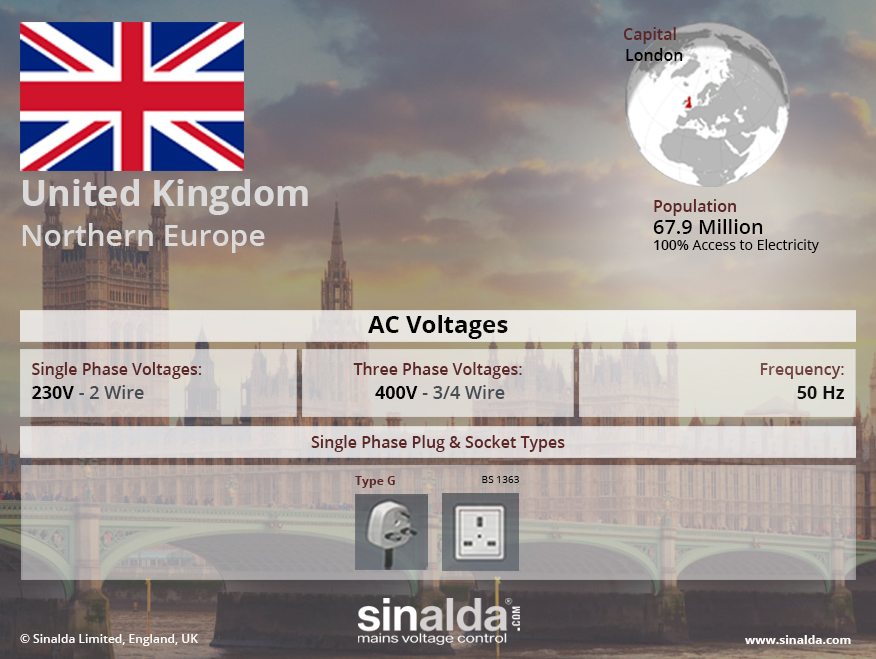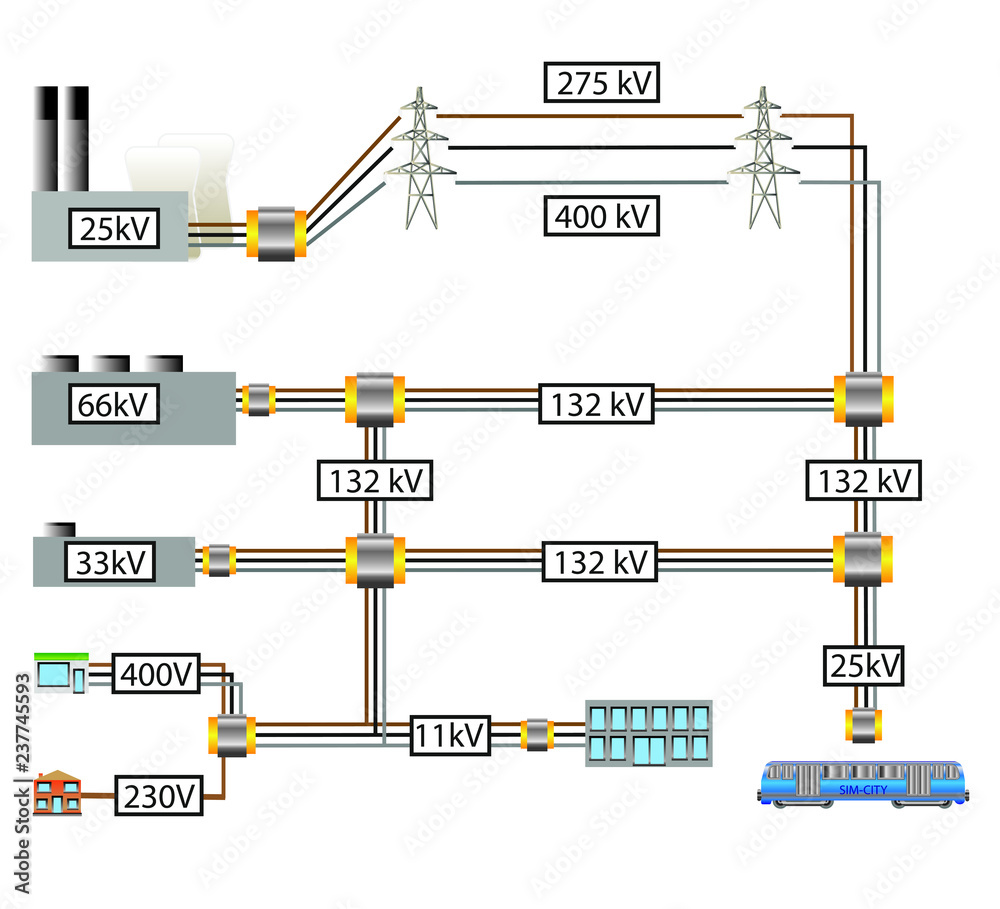Voltage In The Uk National Grid Stock Vector Adobe Stock
The voltage used in united kingdom is 230v and the frequency is 50hz. The value of 230 volts is said to be the ‘nominal voltage’ in an electrical system, ‘voltage’ is the equivalent of ‘pressure’ in a water system, If this is the same in your own country, you don't need a voltage converter when travelling to united kingdom.
UK National Grid Voltages Stock Vector Adobe Stock
The standard voltage is 230 v at a frequency of 50 hz. This gives an allowed voltage range of 216.2 volts to 253.0 volts. Check your need for a power plug (travel) adapter in england.
Find travel adapters at amazon.co.uk;
Overhead lines are the electrical cables that transmit electricity all over the country through the electricity grid. Mains electricity by country includes a list of countries and territories, with the plugs, voltages and frequencies they commonly use for providing electrical power to low voltage appliances, equipment, and lighting typically found in homes and offices. (for industrial machinery, see industrial and multiphase power plugs and sockets.) some Electricity supplies worldwide can vary from anything between 100v and 240v.
It can be extremely dangerous to use an electrical appliance that is rated at a voltage different from the supply. As voltage can differ from country to country, you may need to use a voltage converter or transformer whilst in united kingdom. You will need a step down voltage converter a device that can be plugged to 230 volts and it provides an outlet with 120 volts for your united states of The mains supply in the uk is an alternating current (ac) voltage at a frequency of 50 hertz (hz) and a voltage of 230 volts (v).

The power input for households is ac as the national grid can only
What is the mains voltage in england? Just like the rest of europe, the voltage in england is 230 volts and the frequency is 50 hz. What is the plug for united kingdom (uk)? Before you travel, check the information below to make sure your electronic devices are compatible with the outlet type and voltage.
Type g (bs 1363) voltage: Outside of the uk, this outlet type pretty much only exists in former british colonies such as hong kong. Like the majority of countries, the frequency of the uk’s electrical grid is 50hz. The standard voltage there is 230v, meaning appliances rated between 220 and 240v can be safely used without a voltage converter.

Cells and batteries supply a current which always flows in the same direction.
This is called a direct current (d.c.). For a uk mains voltage graph. To find out about house wiring in the uk. One of the most often asked questions is what electrical devices you can bring from the us.
The uk has a completely different electrical standard, voltage, frequency and plug type. This website and its author(s) will not be held responsible for any accidents or lawsuits that occur from following this advice, it is not professional electrician advice. This distribution network then carries electricity to individual towns and villages throughout the midlands, south west and wales where distribution substations transform the voltage to 230 volts. Our network is comprised of over 220,000 kilometres of lines and cables and 185,000 transformers which are used to step down voltages.
![Visualizing the UK's electricity generation [OC]](https://i.redd.it/32ncbpm7d3t61.jpg)
Learn about the uk mains voltage, plug types, power adaptors and converters for your trip.
Find out how to use your electrical items safely and easily in great britain. Information and chart on voltages and frequencies (hertz) listed by country. Just like the rest of europe, the voltage in the uk is 230 volts and the frequency is 50 hz. The standard voltage in the u.s.
Is 120 v, and the frequency is 60 hz, whereas in london, the sockets deliver 230 v and the electrical grid’s frequency is 50hz. Keep in mind this is the standard supply voltage in london, and it may vary in other regions of the u.k. In the uk (former 240v nominal) they are: In the uk power network, the mains electricity supply is generated by the national grid.

Different voltage classifications are essential to identify system voltages and to classify apparatus for maintenance and operation.
This means that the actual voltage delivered to homes and businesses can range between 216v and 253v. This range ensures compatibility with various appliances and devices while maintaining safety standards. Wind power contributed 15% of uk electricity generation in 2017 and 18.5% in the final quarter of 2017. Uk electrical power supply and consumption.
At the present time the available uk power generation capacity is about 78gw not including a large number of minor generation facilities e.g. Small hydroelectric generators, solar panels , factory based diesal generators etc. (tables showing the capacity are provided at the foot of this webpage). It is the form of electrical power that is delivered to homes and businesses through the electrical grid in many parts of the world.
In the uk, the standard voltage is 230v.
At least, that's the official number. In reality, it's 240v which is what it used to be before britain joined the eu. Many accessories for electrical installations (e.g., wall sockets, switches) sold in the uk are designed to fit into the mounting boxes defined in bs 4662:2006—boxes for flush mounting of electrical accessories—requirements, test methods and dimensions, with an 86 mm × 86 mm square face plate that is fixed to the rest of the enclosure by Manufacturers usually allow a further margin of safety and, if the voltage does occasionally fall outside these limits, there should be no adverse effect on your appliances.